 |
 |
 |
Motion Capture Lab in the news
Why zombies, robots, clowns freak us out (CNN 7/11/12)
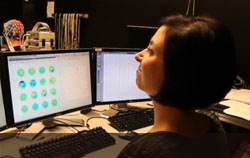
Ayse Saygin, professor at UC San Diego, is featured in an article in CNN Health to discuss her research into a strange phenomenon called the "uncanny valley." This term is used to describe the idea that as a robot's appearance becomes more humanlike, it can seem disturbing. By using brain imaging and EEG in the Motion Capture Lab, Ayse Saygin and her team hope to understand the EEG patterns associated with the uncanny valley effect. Eventually, this research could help robot developers or animators create robots that don't disturb people. Read the article 
The citation for the EEG results:
Urgen, B.A., Plank, M., Ishiguro, H., Poizner, H., Saygin, A.P. Temporal Dynamics of Action Perception: The Role of Biological Appearance and Motion Kinematics, in the Proceedings of the Cognitive Science Society, Annual Meeting, Sapporo, Japan, August, 2012.
|
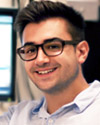 Dave Deriso awarded Marie Curie Fellows scholarship to study at Oxford University Dave Deriso awarded Marie Curie Fellows scholarship to study at Oxford University
Dave Deriso has been awarded a Marie Curie Fellows scholarship to study at Oxford University as one of 14 research fellows to be trained in a new European Network. The European Community Seventh Framework Initial Training Network "Adaptive Brain Computations" (ABC) is a multi-disciplinary research and training program which aims to integrate the study of learning and brain plasticity to promote wellbeing and advance healthcare interventions. More
 TDLC's Jim Tanaka is featured on CNN Health (link from CNN home page): TDLC's Jim Tanaka is featured on CNN Health (link from CNN home page):
With autism, no longer invisible (CNN Health)
The article highlights the work of Jim Tanaka and Joseph Sheppard, directors of the Centre for Autism Research, Technology and Education (CARTe), which launched officially in November 2011. The center, located at the University of Victoria, uses technology like FaceMaze to help people with autism. More
 David Peterson will become the next TDLC Fellows Committee Chair for Fall 2012 - Summer 2013. David Peterson will become the next TDLC Fellows Committee Chair for Fall 2012 - Summer 2013.
Dave has served on the Fellows Committee for more than two years, and he will be the first Chair from the Sensory Motor Network. He was a postdoc in the Poizner and Sejnowski labs. He studies the basal ganglia, Parkinson's Disease, and forms of dystonia. His predecessor, Christopher Kanan, served as Chair from 2009 - 2012.
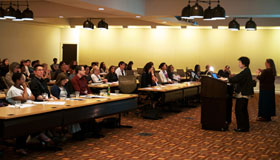 iSLC Conference (inter-Science of Learning Center Conference) iSLC Conference (inter-Science of Learning Center Conference)
April 21-23, 2012
More than 100 researchers attended iSLC 2012 at UC San Diego, which had the theme "Time, Mind, and Education Intertwined." The conference emphasized the vital role time plays in the science of learning, ranging from the temporal characteristics of communication, longitudinal educational intervention studies, technologies for processing video data, and more. Two days of talks and posters enabled researchers from linguistics, computer science, neuroscience, psychology, education science, and other fields to share their discoveries. TDLC fellow Chris Kanan organized the event, which was funded by an NSF grant.
For more about the iSLC conference, along with photos, please click here.
|
|

|
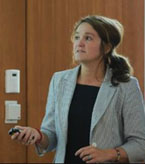 Carnegie Mellon Brain Research Shows Visual Perception System Unconsciously Affects Our Preferences Carnegie Mellon Brain Research Shows Visual Perception System Unconsciously Affects Our Preferences
Researchers Launch NSF-supported Startup, neonlabs, To Apply Findings to Online Video Market
"New research from Carnegie Mellon University's Center for the Neural Basis of Cognition (CNBC) shows that the brain's visual perception system automatically and unconsciously guides decision-making through valence perception." Lead author of the study, TDLC's Sophie Lebrecht, who works in TDLC investigator Michael Tarr's lab (part of the Perceptual Expertise Network), explains that the findings offer important insights into consumer behavior in ways that traditional consumer marketing focus groups cannot address. More
Note: The initial seed money for this work was provided by a 2010 TDLC small grant to TDLC member Sophie Lebrecht, who is part of Michael Tarr's lab (TDLC Investigator and CNBC co-director).
Cortical Rhythms in the Human Brain During Free Exploration are Linked to Spatial Memory
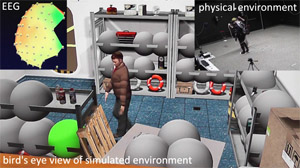
TDLC researcher Joe Snider, trainee Markus Plank and PI Howard Poizner, along with colleagues Gary Lynch and Eric Halgren, are participating in exciting work in the Motion Capture Lab at UC San Diego. By combining motion capture, virtual reality and high density electroencephalographic recordings (EEG), their goal is to identify neural processes, based on EEG temporal dynamics, that underlie active spatial exploration and memory.
In a study funded by a grant from the Office of Naval Research (ONR), subjects actively explore an environment on a virtual aircraft carrier deck presented with a lightweight head-mounted display (HMD) having a total of 12 miniature monitors. The researchers are finding that cortical rhythms in the human brain recorded as subjects freely walk about a large-scale virtual environment predict future memory for the environment. To view an example of this virtual reality, please click here: http://vimeo.com/28649538.
Different kinds of visual learning reflect different patterns of change in the brain
Yetta Wong, Jonathan Folstein and Isabel Gauthier
 In two recent articles, Yetta Wong, Jonathan Folstein and Isabel Gauthier, members of the Temporal Dynamics Learning Center supported by NSF, compared two different kinds of learning traditionally called “perceptual expertise” and “perceptual learning”. The scientists bridged across very different training methods, to learn about how the kind of experience we have with an object category determines what we learn about them and which brain networks are responsible for the learning. More In two recent articles, Yetta Wong, Jonathan Folstein and Isabel Gauthier, members of the Temporal Dynamics Learning Center supported by NSF, compared two different kinds of learning traditionally called “perceptual expertise” and “perceptual learning”. The scientists bridged across very different training methods, to learn about how the kind of experience we have with an object category determines what we learn about them and which brain networks are responsible for the learning. More
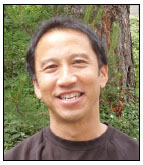 Let's Face It partners with The Andy Warhol Museum Let's Face It partners with The Andy Warhol Museum
The Let's Face It program, under TDLC's Jim Tanaka, is partnering with The Warhol Museum to help kids with autism develop face-reading skills.
Jim Tanaka explains how he made the initial "connection" in his mind and decided to contact the museum: "It's the artists (at The Warhol) who know the most about faces and what goes into a face," says Tanaka. "I was inspired by Andy Warhol's approach that the observer becomes part of the art. I want our game user, a child, to become part of the game in order to make the game more meaningful, and to help make that leap from the computer screen into the real world." More
In addition to the above-mentioned partnership, Jim Tanaka recently returned from the Warhol panel discussion on Art and Health
Behavior -- an exchange that focuses on how artists, educators
and scientists can collaborate to improve health outcomes. He is hoping to open up further activities that combine the Let's Face It! Program with The Warhol.
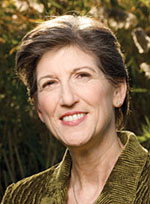 TDLC's Paula Tallal is interviewed on BAM! Inside The Minds of Teens with Dr. Regina Lamourell: TDLC's Paula Tallal is interviewed on BAM! Inside The Minds of Teens with Dr. Regina Lamourell:
Is Your Child Struggling with Literacy?
This article discusses how the problem of literacy is something "beyond a lack of finances or a lack of will ... It is a lack of understanding of fundamentally what it takes from the perspective of how the brain works, to become a good reader." Improvement requires a new understanding of interventions and approaches of getting these interventions to children who need them. The interview also focuses on the language and reading weaknesses of incarcerated youth.
More
|
|
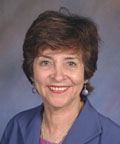 Busy Year for The Educator Network Busy Year for The Educator Network
It has been a busy and productive year for The Educator Network. The Distinguished Educator Advisory Panel has continued its ongoing joint meetings with the TDLC scientists and the website membership is growing steadily with over 150 scientists, educators and community as members. For a description of the events, which include a Brain Awareness Event and Distinguished Educator Panel meetings, please click here.
|
|
 |

Featured Scientist:
Jacob Whitehill, TDLC Graduate Student in
UC San Diego's Machine Preception Laboratory
Email: jake@mplab.ucsd.edu
What is Optimal Teaching, and what did the recent Optimal Teaching Workshop at UC San Diego entail?
The word "optimal" in "optimal teaching" is intended to underline how stochastic optimal control theory, as well as the related fields of machine learning and reinforcement learning, can contribute to the study of how humans teach as well as to the development of automated teaching systems.
The past decade has seen tremendous growth in the development of inexpensive sensors such as high-resolution cameras as well as computer vision and machine learning algorithms for mapping the sensor values into meaningful information about a student's state, such as whether he/she is frustrated, bored, engaged, etc.
In order to use these sensors to teach more effectively, however, it is useful to employ a principled mathematical framework such as control theory to integrate sensor inputs into the decision making process. For instance, if a student's performance drops suddenly, is it because the material was too difficult, or because the student stopped trying? If the student's face indicated that he had "disengaged" from the task, how should that sensor value affect the teacher's next action? Control theory provides a framework for using sensor inputs to both update the teacher's belief about how the student is doing, as well as to take actions to maximize the student's expected learning gains.
The purpose of the Optimal Control Workshop, which the TDLC hosted on May 4 of this year, was to bring together senior researchers from the intelligent tutoring systems, neuroscience, cognitive science, machine learning, and psychology communities to discuss the state-of-the-art and current challenges to automated teaching, including but not limited to the application of stochastic optimal control theory to teaching. For more information about the Optimal Teaching Workshop, please click here. |
|
This message was sent from:
The Temporal Dynamics of Learning Center (TDLC.UCSD.EDU)
University of California, San Diego,
9500 Gilman Drive, La Jolla, CA 92093
To learn more about TDLC, please visit us on the web at: TDLC.UCSD.EDU
Please contact webmaster@tdlc.ucsd.edu to unsubscribe.
TDLC is a Science of Learning Center (SLC),
one of six SLCs funded by the National Science Foundation. NSF grant #SBE-0542013
|
|
 |
 |
 July / August 2012 July / August 2012
|
|

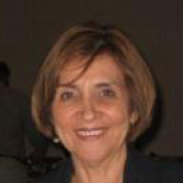
TDLC's The Educator Network
Recent
Forum Topic:
The benefits of speaking two languages
The New York Times features an article in Gray Matter that discusses the benefits of speaking two languages, not only for its advantages of conversing in this global world with more people but in the benefits to your cognitive skills beyond language. The article also cites that being bilingual can give one protection against dementia in older age.
More
Article
|
|
|
 |
 |
Scientists create mice that automatically label new memories for easy reactivation
(Discover Magazine)
Article describes research by Mark Mayford, member of TDLC's Advisory Board. Read More
|
 |
New Website to Open World of Neurosciences to Public
(UC San Diego News)
Co-director of UC San Diego's Kavli Institute for Brain and Mind will Serve as editor in chief. This new resource for the public will be called Brain Facts.Org, and will be available online in May 2012. Read More
Go to BrainFacts.org website

|
 |
How Exercise Could Lead to a Better Brain
(The New York Times)
The changes taking place in the adolescent brain lead to increased vulnerability to drug abuse and may also contribute to the emergence of psychiatric disorders. Read More
|
 |
Teen Brain Vulnerability Exposed
(BrainFacts.org)
The changes taking place in the adolescent brain lead to increased vulnerability to drug abuse and may also contribute to the emergence of psychiatric disorders. Read More
|
 |
How Your Brain Is Like Manhattan
(SHOTS,
NPR's Health Blog)
In a study in Science, researchers looked at the networks of fibers that carry signals from one part of the brain to another, and found a remarkably organized three-dimensional grid.
Read More
|
 |
Slacker or go-getter? Brain chemical may tell
(LiveScience,
MSNBC The Body Odd)
Researchers have found amounts of dopamine in three brain regions could determine if a person is a go-getter or a procrastinator.
(LiveScience,
MSNBC The Body Odd)
Read More
|
 |
Regular Chocolate Eaters are Thinner
(UC San Diego,
March 26, 2012)
Dr. Beatrice Golomb and colleagues in the UC San Department of Medicine have found that adults who eat chocolate on a regular basis are actually thinner than those who don't.
Read More
|
 |
Does the sun make you sneeze? It's not just you
MSNBC, The Body Odd
Read More
|
 |
Gene Expression Abnormalities in Autism Identified
(UC San Diego News)
Genetic studies find dysregulation in pathways that govern development of the prefrontal cortex in young patients with autism. Read More
|
 |
How Selective Hearing Works in the Brain: 'Cocktail Party Effect' Explained
(ScienceDaily)
Scientists from UC San Francisco study the mystery of how selective hearing works -- how people can tune in to a single speaker while tuning out their crowded, noisy environment. Read More
|

|
What causes
"brain freeze"?
(the "headache brought on by a lick of ice cream or a sip of an ice-cold drink")
A new study suggests that rapid changes in blood flow to the brain may help explain a baffling phenomena called "brain freeze," as well as other types of headaches like migraines.
Researchers monitored blood flow in the brain among a group of healthy volunteers while they sipped ice water with the straw pressed against their upper palates -- ideal conditions to bring on a brain freeze. Another group drank room temperature water. The results showed a rapid change in blood flow in the anterior cerebral artery in conjunction with a brain freeze incident.
This response might be part of a natural survival mechanism. Vasodilation might move warm blood inside tissue to make sure the brain stays warm. This sudden influx of blood could raise pressure within the skull and cause the pain associated with brain freeze and other types of headaches. Developing drugs that regulate this process may provide more effective headache pain relief.
(reference:
WebMD Health News) |
|
|
 |

![]()
